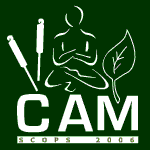 I’ve largely ignored these studies in the past, but perhaps it’s worth a second look.
I’ve largely ignored these studies in the past, but perhaps it’s worth a second look.
To start, this 1993 study by Dr. David Eisenberg, who is now the director of Complementary and Integrative Medical Therapies at Harvard University, is considered a landmark in the field of “unconventional medicine.”
First, the details.
- A national survey was conducted to determine the prevalence, costs, and patterns of use of unconventional therapies, such as acupuncture and chiropractic.
- The survey included 16 commonly used CAMs neither taught widely in US medical schools nor generally available in US hospitals.
- Telephone interviews were conducted with 1539 adults.
- Respondents were asked to report any serious or bothersome medical conditions and details of their use of conventional medical services.
And, the results.
- 34% used at least 1 unconventional therapy in the past year.
- Most commonly used CAM:
- Exercise: 26%
- Prayer: 25%
- Relaxation: 13%
- Chiropractic: 10%
- Massage: 7%
- Imagery: 4%
- Spiritual healing: 4%
- Commercial weight loss program: 4%
- Lifestyle diets (eg, macrobiotics): 4%
- Herbal medicine: 3%
- Megavitamin therapy: 2%
- Self-help: 2%
- Energy: 1%
- Biofeedback: 1%
- Hypnosis: 1%
- Homeopathy: 1%
- Acupuncture: less than 1%
- Folk remedies: less than 1%
- A third of CAM users saw CAM providers an average of 19 times during the preceding year.
- The average charge per visit: $28.
- Highest use was among nonblack persons from 25 to 49 years old with more education and higher incomes.
- Most used unconventional therapy for chronic medical conditions.
- 72% of the respondents who used unconventional therapy did not inform their medical doctor.
- Extrapolation to the US. population:
- 425 million visits to CAM providers — exceeding the number of visits to all US primary care physicians (388 million).
- Expenditures associated with CAM: $14 billion, three quarters ($10 billion) paid out of pocket.
- Comparable to $13 billion spent out of pocket annually for all hospitalizations in the US.
The bottom line?
2 decades ago, a third of Americans used CAM.
As new studies are published, we’ll see how more recent data compare.
5/24/10 18:11 JR